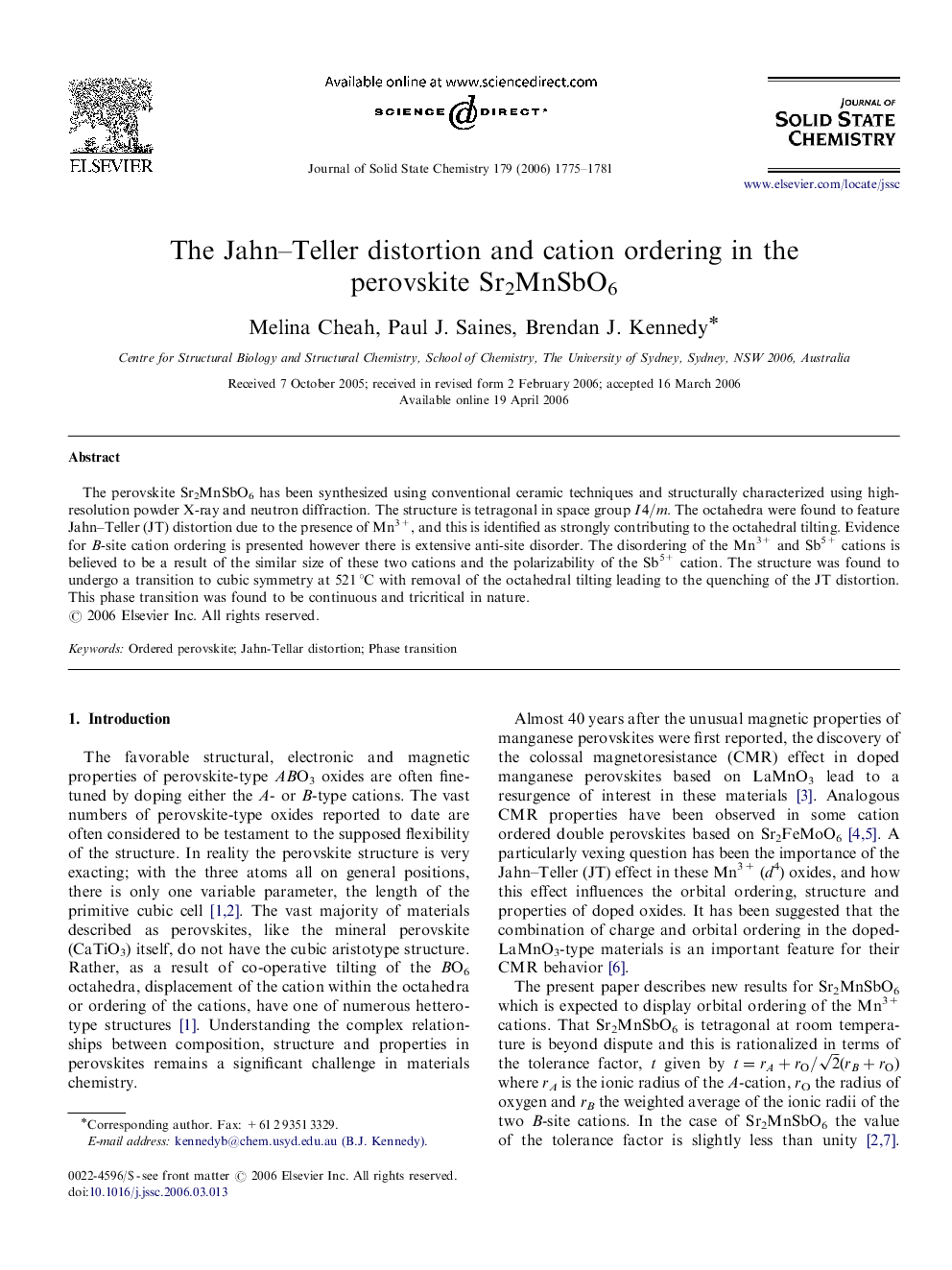| Article ID | Journal | Published Year | Pages | File Type |
|---|---|---|---|---|
| 1330044 | Journal of Solid State Chemistry | 2006 | 7 Pages |
The perovskite Sr2MnSbO6 has been synthesized using conventional ceramic techniques and structurally characterized using high-resolution powder X-ray and neutron diffraction. The structure is tetragonal in space group I4/mI4/m. The octahedra were found to feature Jahn–Teller (JT) distortion due to the presence of Mn3+, and this is identified as strongly contributing to the octahedral tilting. Evidence for B-site cation ordering is presented however there is extensive anti-site disorder. The disordering of the Mn3+ and Sb5+ cations is believed to be a result of the similar size of these two cations and the polarizability of the Sb5+ cation. The structure was found to undergo a transition to cubic symmetry at 521 °C with removal of the octahedral tilting leading to the quenching of the JT distortion. This phase transition was found to be continuous and tricritical in nature.
Graphical abstractCrystal structure of the tetragonal I4/mI4/m structure of Sr2MnSbO6 in the 1 0 0 plane. The 0 0 1 view illustrates the effect of tilting of the octahedra and the 1 0 0 view highlights the alternate elongation and compression of the Mn/Sb octahedra. The Mn-rich sites are represented by the blue polyhedra.Figure optionsDownload full-size imageDownload as PowerPoint slide
